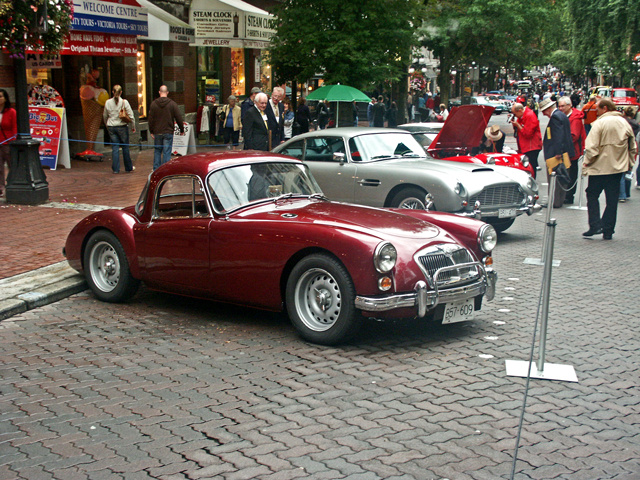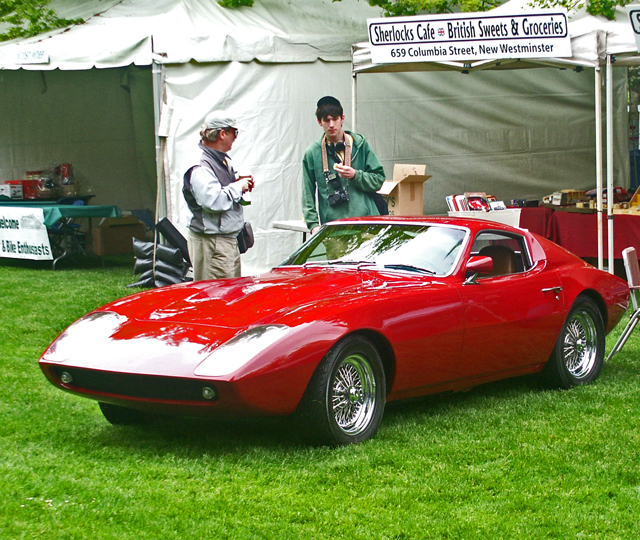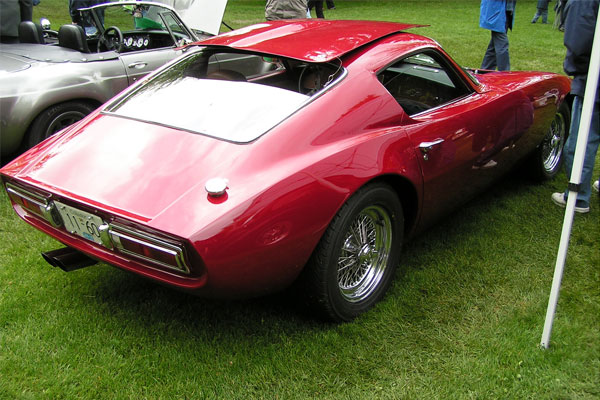This story originally ran in our March 2014 issue of Classic Motorsports. Some information and pricing will be different.
Enthusiasts pore over nearly every inch of their cars. You make sure the paint is shiny, the engine runs perfectly, and the interior is spotless. If something isn’t right, you know it. Your cars are your babies, and you’ll do everything conceivable to keep them in tiptop shape.
But many owners still overlook the four most important parts of their cars: the tires.
Relegated to an afterthought of classic car ownership, tires are a car’s only link to the road, and they are just as important on a weekend toy as they are on a daily commuter. Tires are to cars what foundations are to buildings; without good ones, things could go horribly wrong. How many skyscrapers are built on cracked, substandard foundations? Few, or at least few that are still around today. The situation gets worse when modern roads–and the modern cars that frequent them–are brought into the equation. Classic cars need to be able to safely stop and turn as quickly as their modern counterparts, but they lack the brakes and suspension to make that possible.
Classics also need to soak up the bumps and potholes that come with an aging infrastructure, in spite of their delicate nature. Good rubber can hide these weaknesses, making a classic car safer, more reliable and more enjoyable.
So it’s odd that the only factors most people consider when it comes to tires are cost and appearance. New tires look funny and cost a lot of money, so many enthusiasts just leave old tires on their old cars.
For the classic car enthusiasts who do care about performance, real data points are few and far between. There’s a wealth of information about the fastest racing rubber, but that doesn’t help Spitfire owners who spend most of their time on public roads.
This raises a question: What is the best tire for the average classic car enthusiast?
There’s really only one way to make an informed decision: Round up a bunch of tires, then try out all of them–all on the same car. Obviously, the average enthusiast can’t swing this, but Classic Motorsports can. We called Coker Tire, which has carved out a niche for itself by making vintage-looking tires that perform like their more modern counterparts.
They offer antique, brand-name tires that have been remade with modern rubber. Coker offered to send us three of their top-selling brands, sized for our test car. It wouldn’t be fair to test classic car tires without a classic car.
We picked a 1956 MGA for our test mule because it represents what’s in the average Classic Motorsports reader’s garage fairly well.
Our example hadn’t had any major modifications since it left the factory, and it even rode on wire wheels. We borrowed it from Wire Wheel Classic Sports Cars, a reputable classic car dealer that has always gone out of their way to help us out. Our goal? Find the best tire of the bunch. Oh, and we should also mention that these tires are at three very different price points. Do you really get what you pay for? Or will the underdog be victorious? We headed to the Florida International Rally & Motorsport Park, a 430-acre motorsports facility in Central Florida, to find out.
Test Method

Each brand of tire underwent three blind, scientific tests. The tires were mounted on identical wheels and inflated to the same pressure. The test drivers had no idea which tires were on the car during each run, and the test order was randomized.
Test One: a 15-mile drive over all sorts of roads at different speeds. This test evaluated each tire’s road manners.
Test Two: a nearly clinical evaluation of each tire’s physical attributes–think diameter, weight and tread depth. This test teased out the subtle differences between the tires and gave us a chance to rate their appearance.
Test Three: an autocross session with multi-time SCCA National Champion Dan Shields and an AiM Sports Solo DL digital lap timer. This test simulated the sorts of emergency maneuvers that are occasionally required to avoid an accident.
Michelin XZX - 3rd

The Michelin XZX rings the till in at just more than twice the price of the least expensive tire we tested. The Michelin name certainly carries a lot of weight, but is it worth the price premium? In our testing, the answer is “Not really.”
The Michelin’s physical measurements landed it smack-dab in the middle of the other two tires, and that set the tone for the rest of the test.
The Michelins earned second place in the road noise, braking, comfort and appearance categories, and took home first place in only one category: prestige. In the autocross, the Michelin was the slowest, and our driver ranked it as the worst-feeling tire of the group. Although the Michelin earned a third-place overall ranking, it isn’t a bad tire. Still, we don’t think it’s worth the price premium over the less expensive Vredestein and Firestone offerings. Some will undoubtedly prefer the Michelin name, though.
Rankings Road noise: 2nd
Handling feel: 3rd
Braking: 2nd
Comfort: 2nd
Appearance: 2nd
Price: 3rd
Specs Size: 165 SR15
Price: $208 each
Tread depth: 0.30 in.
Tread width: 5.75 in.
Diameter: 25.50 in.
Weight: 17.5 lbs.
Avg. lap time: 64.684 sec.
Prestige: 1st
Autocross: 3rd
Firestone F560 - 2nd

The Firestone F560 was the least expensive tire of the bunch, and it showed in certain areas. This one had the narrowest, deepest tread and the most weight of the three that were tested. It also had the harshest manners on the street, and it seemed to lock up faster than the other brands under braking.
However, it placed second in the autocross, with our driver calling it the “best-feeling tire” when driven at the limit of adhesion. The Firestone also won the appearance category thanks to its authentic classic looks.
Overall, the Firestone is a good choice, especially at a price that halves the most expensive one in this lineup. We ranked it second overall and would have no problem recommending it to the average car enthusiast. It represents an excellent value at about $80 each.
Rankings Road noise: 3rd
Handling feel: 1st
Braking: 3rd
Comfort: 3rd
Appearance: 1st
Price: 1st
Prestige: 2nd
Autocross: 2nd
Specs Size: 165 R15
Price: $80 each
Tread depth: 0.35 in.
Tread width: 5.38 in.
Diameter: 25.25 in.
Weight: 18 lbs.
Avg. lap time: 64.391 sec.
Vredestein Sprint Classic - 1st

The Vredestein has long been a favorite for Classic Motorsports project cars, and our blind testing backed up this preference. It’s priced solidly between the Firestone and the Michelin but is the lightest and the widest of the crop. Its tread is the shallowest, too.
These attributes make the Vredestein sound more like an autocross tire than a street tire, and it was at home on the track. It had the fastest average time, and Dan posted his most consistent runs of the day on a set.
Dan did say that the Vredestein didn’t feel as good on track as the Firestone, though. On the street, the Vredestein also excelled.
It earned first place in the subjective road noise, braking and comfort categories, though its shallow tread may pose issues in the rain. We liked this tire the best on the street.
Perhaps the only issue is its appearance; our classic car dealer pointed out that the Vredestein name didn’t carry the same weight as Firestone or Michelin and that the Vredestein’s tread looks “a little funny from the side.”
Overall, the Vredestein earned a well-deserved first-place ranking. It isn’t the least expensive or the most attractive rubber, but its driving manners–both on and off the track–sealed the deal for us.
Rankings Road noise: 1st
Handling feel: 2nd
Braking: 1st
Comfort: 1st
Appearance: 3rd
Price: 2nd
Prestige: 3rd
Autocross: 1st
Specs Size: 165 HR15
Price: $119 each
Tread depth: 0.25 in.
Tread width: 6 in.
Diameter: 25.25 in.
Weight: 16.75 lbs.
Avg. lap time: 64.175 sec.
Comments
You missed a very critical one. Life. Not tread life because let’s be honest only rarely would a Classic ever be driven enough to wear out the tread
But storage life before the tire requires disposal because of age.
Since these tires will be in as near perfect storage condition as possible. Does the toss ‘em away every 5 years really apply? I mean in 5 years a lot of classic cars will barely have a month of UV exposure. Maybe 5000 miles or less especially if it’s a case of multiple collector car ownership.
So what’s the advice about life of a tire under ideal storage conditions?
Personally, I would not keep old tires on an old car. Tires degrade, regardless of what they're doing.
In reply to Jordan Rimpela : How many vintage cars do you have in your garage? How many miles do they get? If you had several collector cars do you honestly believe you’d throw away perfectly good tires?
Watch the movie, Worlds fastest Indian. Granted setting top speed records on tires the cracks are filled with shoe polish is a bit over the top, but I’ve vintage raced on a decade old tires. Since they were stored in my nice warm shop out of the weather And exposure to UV I didn’t hesitate. It was race on hard rubber or stay at home.
Real racers race.
I suppose that makes me a ghost 
Actually, I'll agree with Jordan. Tires do degrade, regardless of what they're doing. Put them in the sun and they'll degrade faster, but we're talking thowing the tires out in 8 years instead of 10. Rubber is an organic material, and it degrades with or without UV exposure.
Before you ask, I have 2 Austin Healeys, 3 Triumphs, and a classic Mini. They get driven frequently (we've been from Chicago to the west coast and back), and raced at hill climbs and autocrosses. After 5 years, start inspecting more frequently. After 7, moreso. After 10, they're junk for anything other than rolling on and off a trailer.
P.S. The Fastest Indian is a great movie, but I don't think it's providing maintenance advice. :)

wspohn
SuperDork
1/27/22 11:51 a.m.
Basically most of the available tires in original sizes are crap as far as being decent performance rubber. The exception is robably the Vredestein which isn't bad but is still a far cry from what is available for more modern cars.
I adressed the issue on a couple of my cars by slightly widening the rims and going for the best I could get for tires at the time.
1962 MGA Mk 2 Delucxe coupe - 5.5" wheels and running 185x70-15 tires

Tires clear and are waaaay better than anything available to fit original rims - pic below on stock 5" rims with 165x78-15
With more roon under the body on my rebodied 1956 MGA I could go to 6" rims and 215x60-15s (the rims are early AC Cobra centerlaced with more offset as the wider body allowed.

If you want to stay stock looking, go with Vredesteins on stock rims despite the compromise in performance. but if you want to enjoy driving the cars as they were meant to be driven, you need a bit more rim width and to find one of the ever diminishing modern tires that have the appropriate size for the new rims.

Displaying 1-6 of 6 commentsView all comments on the CMS forums
You'll need to log in to post.
































